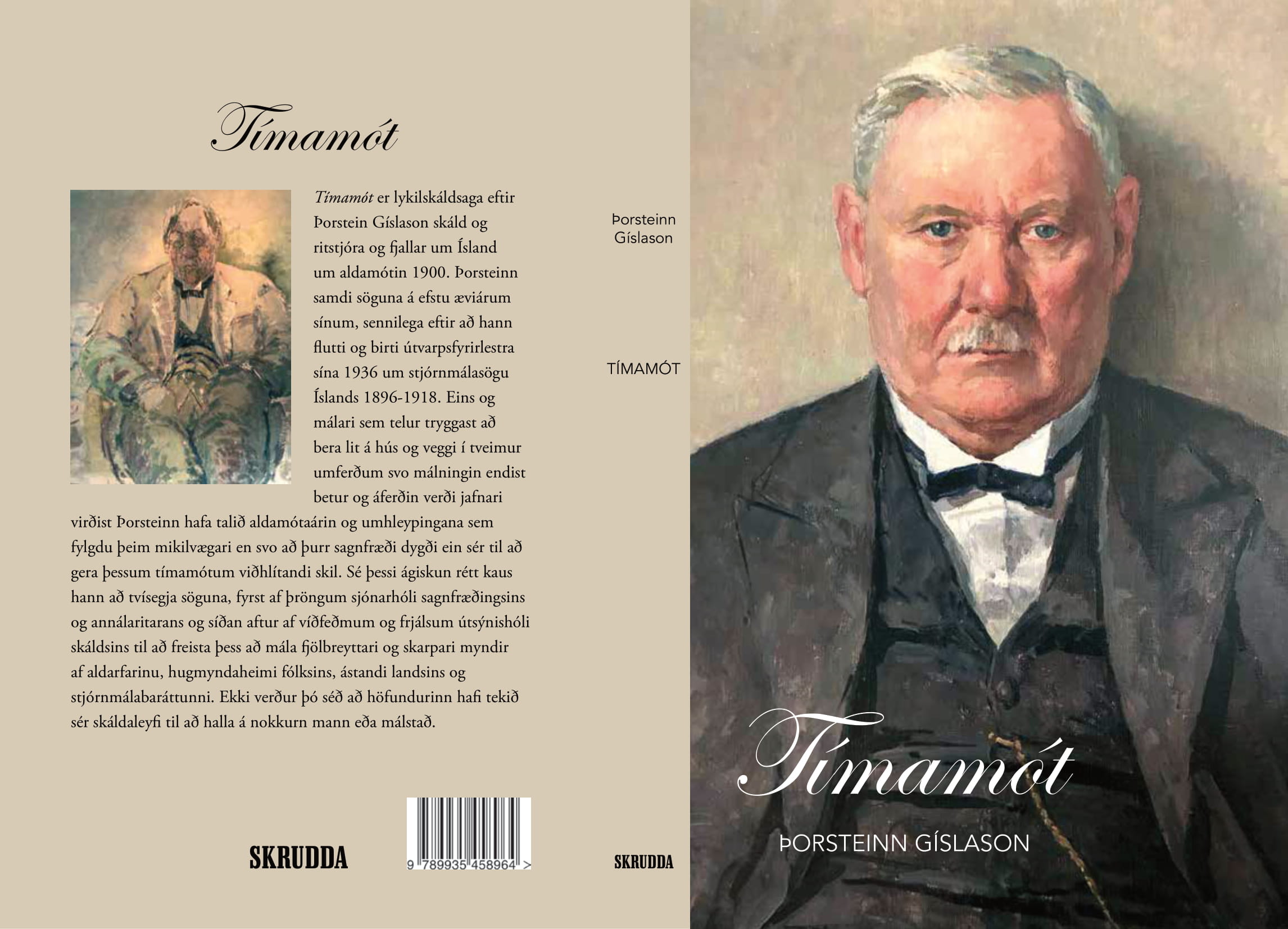Tímamót/Watershed
This roman à clef by Thorsteinn Gíslason, poet and editor (1867-1938), describes Iceland around 1900, when the country began its economic and social ascent on its own, free at last from Danish rule. Gíslason probably penned the novel during the last two years of his life after delivering and publishing in 1936 his twelve radio lectures on the political history of Iceland 1896-1918, to this day an important original source of information. As if he did not consider an objective historical account adequate to the task, he chose to recount the story a second time from the broader and freer vantage point of the poet, apparently to be able to thus paint a richer picture of events, ideas, personalities, and politics. The formula is also familiar in other countries where, for example, the French know their history of the first half of the 19th century in variable proportions from the writings of academic historians and novelists like Honoré de Balzac. Iceland is unusual if not unique in that here the same writer undertook both tasks, telling the story of his country during an important part of its history twice, first as a neutral observer or historian and then again as a novelist and poet. The manuscript was found in Gíslason´s papers after his passing and appears now in print for the first time, throwing new light on cultureal, political, and social life in Iceland around 1900, in Reykjavík as well as around the country. The manuscript was prepared for publication by Anna K. Bjarnadóttir and Thorvaldur Gylfason, who also writes an introduction to the volume.

Cover portrait: Brynjólfur Thórdarson.
Back cover portrait: Jóhannes S. Kjarval.